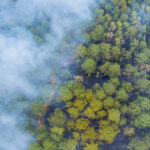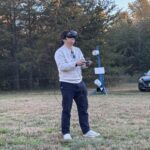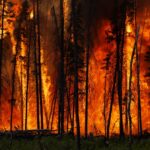Task 221
Optical Properties Of Mineral Dust Aerosol
Principal Investigator(s):
R. Hansell
Sponsor(s):
S. Tsay
Last Updated:
October 26, 2012 15:25:49
Description of Problem
To conduct testing of the MODIS Characterization Support Team’s (MCST) updated calibration approaches for collection 6 Level-1B Terra/Aqua MODIS data using NASA Goddard’s Deep Blue aerosol retrieval algorithm. Also to investigate the optical properties of mineral dust aerosol between the near to thermal IR using global aerosol field measurements combined with analysis of model data to help advance ground and satellite-based remote sensing applications and column energetic studies.
Scientific Objectives and Approach
Specific objectives were:
To perform detailed testing of MCST’s updated calibration approaches for collection 6 Level-1B data for Terra and Aqua MODIS using the Deep Blue aerosol retrieval algorithm. The test domain was fixed over the Saharan Desert (Latitude 0 -35 N; Longitude 20 W – 60 E) for the years 2003, 2006, 2008, and 2010. The calibration approaches were evaluated by comparing Deep Blue’s retrieved aerosol optical depths with those from AERONET and MISR to help identify the optimal calibration approach used in the collection 6 Level-1B product. Additional comparisons were made using NASA Goddard’s Ocean Biology Processing Group’s (OBPG) calibration scheme.
To apply spherical and non-spherical light scattering codes to calculate dust aerosol mass extinction and absorption efficiencies (MEE and MAE, respectively) at wavelengths commonly used in remote sensing, covering an extended range of dust physicochemical properties including particle chemistry, morphology, and size.
To provide a reference to facilitate interpreting field measurements of dust aerosol
To identify spectral relationships in dust MEE values between the near and thermal IR useful for estimating thermal impacts on retrieved parameters such as SST and for identifying long wave radiative effects of dust aerosol.
To provide constraints for modeling studies.
To utilize hyperspectral radiance measurements from NASA Goddard’s ground-based Atmospheric Emitted Radiance Interferometer (AERI) to probe the longwave radiative impacts of dust aerosol near major source regions.
To evaluate/compare direct aerosol radiative effects (DARE) of global dust over the column atmosphere.
Accomplishments
After extensive testing using Deep Blue, the updated calibration method from MCST and that from OBPG for collection 6 Level-1B data were found to be relatively consistent and satisfactory for use in the collection 6 product. Further investigations may be required.
Completed a detailed modeling study of the optical properties of dust aerosol between the near and thermal IR wavelengths which provides an envelope of expected MEE values corresponding to extreme cases in dust physicochemical properties.
Completed study of the longwave DARE for dust aerosol during the Asian Monsoon Year (2008) field campaign using NASA Goddard’s ground-based facilities (SMART-
COMMIT) in Zhangye China (manuscript in review).
DARE results will later be compared with other important dust regions to evaluate differences and similarities in the radiative energetics.
Refereed Journal Publications
Hansell, R.A., J.S. Reid, S.C. Tsay, T.L. Roush, and O. V. Kalashnikova, A Sensitivity Study on the Effects of Particle Chemistry, Asphericity and Size on the Mass Extinction Efficiency of Airborne Mineral Dust in the Thermal IR, Atmos. Chem. Phys., 11, 1527–1547, doi:10.5194/acp-11-1527-2011, 2011
Hansell, R.A., S.C. Tsay, N.C. Hsu, Q. Ji, S.W. Bell, B. Holben, J. Welton, T.L. Roush, W. Zhang, J. Huang, Z. Li., and H. Chen, An Assessment of the Surface Longwave Direct Radiative Effect of Airborne Dust in Zhangye China during the Asian Monsoon Year Field Experiment (2008), J. Geophys. Res., (in review).





